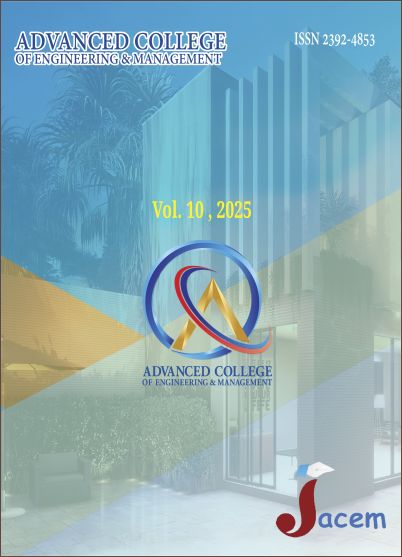A Case Study of Groundwater Recharge Potential in Chitwan District by using Multi Criteria Decision Making Approach
DOI:
https://doi.org/10.3126/jacem.v10i1.76319Keywords:
Remote Sensing, Analytic Heirarchy Process, Lineament Density, Thematic LayersAbstract
Groundwater recharge process is crucial for maintaining the water balance in an area and securing sustainable water supply for drinking, agriculture and industrial purposes and it is also very necessary for the management of both surface and subsurface water resources. The calculation and estimation of groundwater recharge is the way to understand the groundwater reservoir and forecast its potential accessibility. In this study, the effectiveness of the Geographic Information System (GIS)-based Multi Criteria Decision-Making (MCDM) analytic hierarchy process (AHP) as a spatial prediction tool was utilized in exploring the groundwater recharge potential of the Chitwan District. Various aspects of earth surface features such as geology, geomorphology, soil types, land use and land cover, slope, aspect, precipitation, population density, elevation, Lineament density, Drainage density etc. are taken in consideration that influence the groundwater recharge in either direct or indirect way. These thematic layers are prepared and extracted using population data, Landsat 8 image, topographical map, and various other data sources. Weighted analysis and union of data obtained is used for formation of recharge map in this study. A pair-wise matrix analytical method is used to calculate the weightage of layers and are mathematically overlaid for preparation of groundwater recharge potential zone map of Chitwan District. The result reveals that around 78.9 sq. km (3.57%) of total area has been identified as high potential zone for groundwater recharge. The forest areas in central part and south western part of the district have high potential for groundwater recharge. Hilly and mountain terrains in north Mahabharata range are considered as unsuitable zone with very low groundwater recharge potential.
Downloads
Downloads
Published
How to Cite
Issue
Section
License
JACEM reserves the copyright for the published papers. Author will have right to use content of the published paper in part or in full for their own work.




